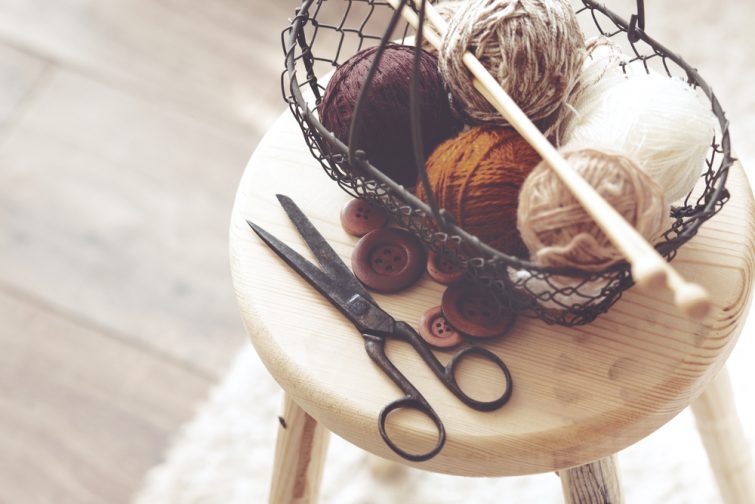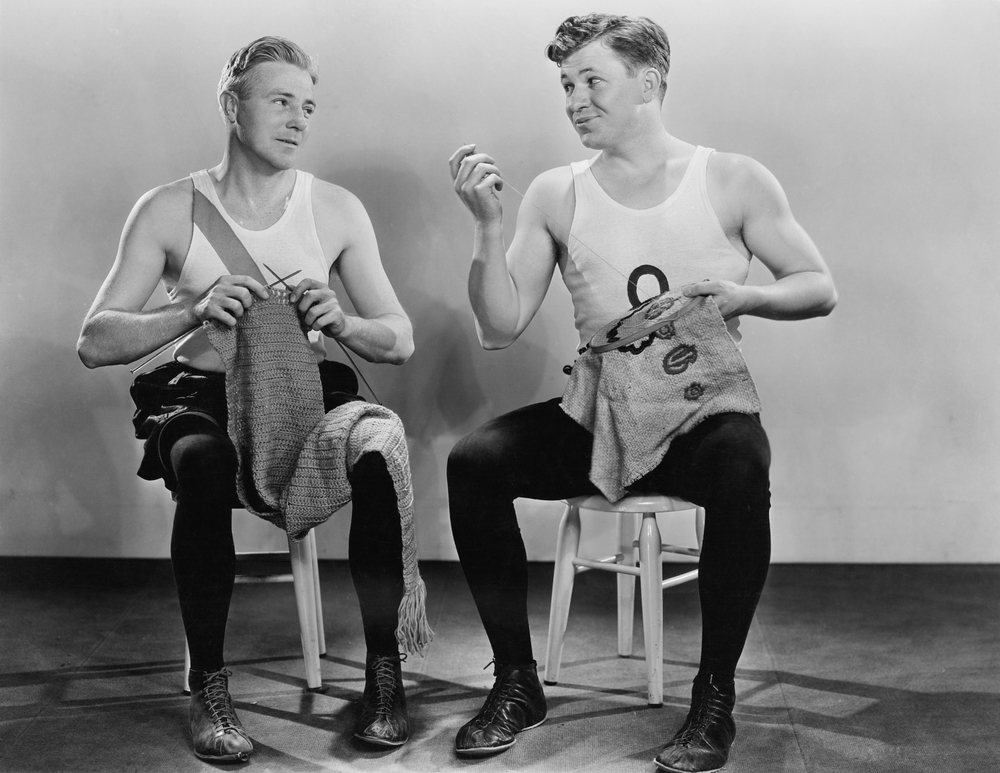
The history of knitting is certainly a tricky one to unpick. Due to early knitting projects being made from natural fibres such as wool, cotton, and silk, many have since decomposed leaving few surviving examples of the craft. So where did knitting originate? Let’s deconstruct this mystery!
For many years it was believed that a certain pair of red socks dating back to 250 – 420 AD (circa), was the first example of knitting. Besides a ball of yarn, typically two needles are needed for knitting. But, it turns out that these curious red socks were in fact knitted using just one needle to splice and knot the string together, which is an ancient Scandinavian technique called nålbindning. However, since knitting and nålbindning produce nearly identical results, we can presume quite confidently that one evolved from the other.
Fast forward a few centuries, the first example of knitting with two needles is found in Egypt dating back to 1000 AD. Although there is some debate among historians about where knitting was developed, considering that we knit right to left – the same as writing in the Arabic language – and that the earliest examples of knitting are made from cotton and silk – fabrics much more available in the Middle East than wool – the evidence seems pretty clear.
Our favourite craft did not take off in Europe until around the 13th or 14th century, so how did knitting get from Egypt to Europe? Once again, the history of knitting is up for debate, but a lot of evidence points to it passing through the then Moorish-occupied Spain and up into the rest of Europe.

Early European knitting was confined to royals, the very rich and the Catholic Church. However, knitting was soon an established craft, and with the demand for knitted stockings on the rise among Italian and Spanish gentlemen, knitting guilds began springing up in the 1400s. If you wanted to work in a knitting guild, first of all, you had to be male and second you had to complete six years of training! The first three were spent learning from the masters, and the next three were for travelling to foreign countries to learn other techniques and patterns. What could be better than spending three years learning your trade while meeting new people and seeing new lands? Well, the thought of returning to a 13-week exam of knitting pieces like a felted cap, a pair of stockings or embroidered gloves, a shirt or waistcoat and a knitted carpet might dampen spirits! But we do have these knitting guilds to thank for the precision of the craft that we know and love today – without this strict exam process, knitting would never have evolved!
From the 1400s, knitting continued to grow with the first knitting machine being invented in 1589 and balls of yarn moving from hands to factories during the Industrial Revolution. But handknitting did not die there! During the World Wars, the fashion industry revived knitting as an art form, and we are still knitting to this day! Sure, we can all go out and buy a perfectly knitted sweater, but taking the time to sit down with two knitting needles and a ball of yarn is much more satisfying and meaningful. What is your next project?